Welcome to a new issue of the Journal of Runic Studies, the premier Malkioni publication for studies into the nature of Glorantha. If you haven’t subscribed yet, please consult with the spirit bound to the appropriate electronic page.
God Learner Sorcery
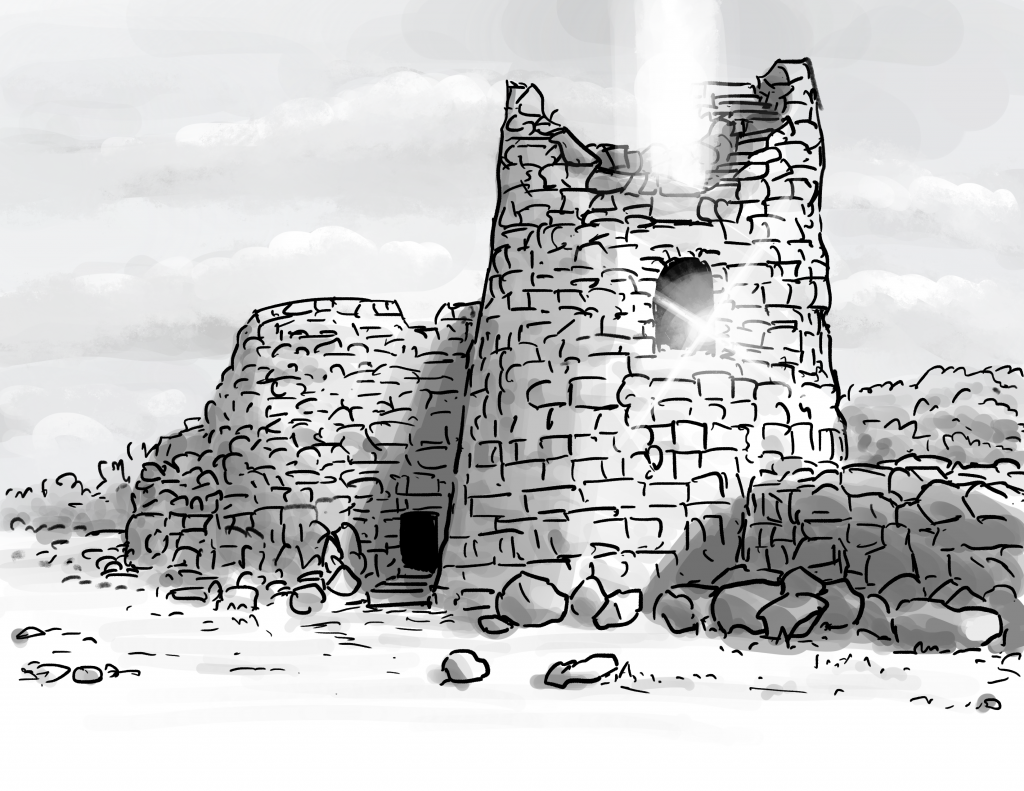
Here is what us God Learners were up to this week.
Bis Repetita: RuneQuest Starter Set
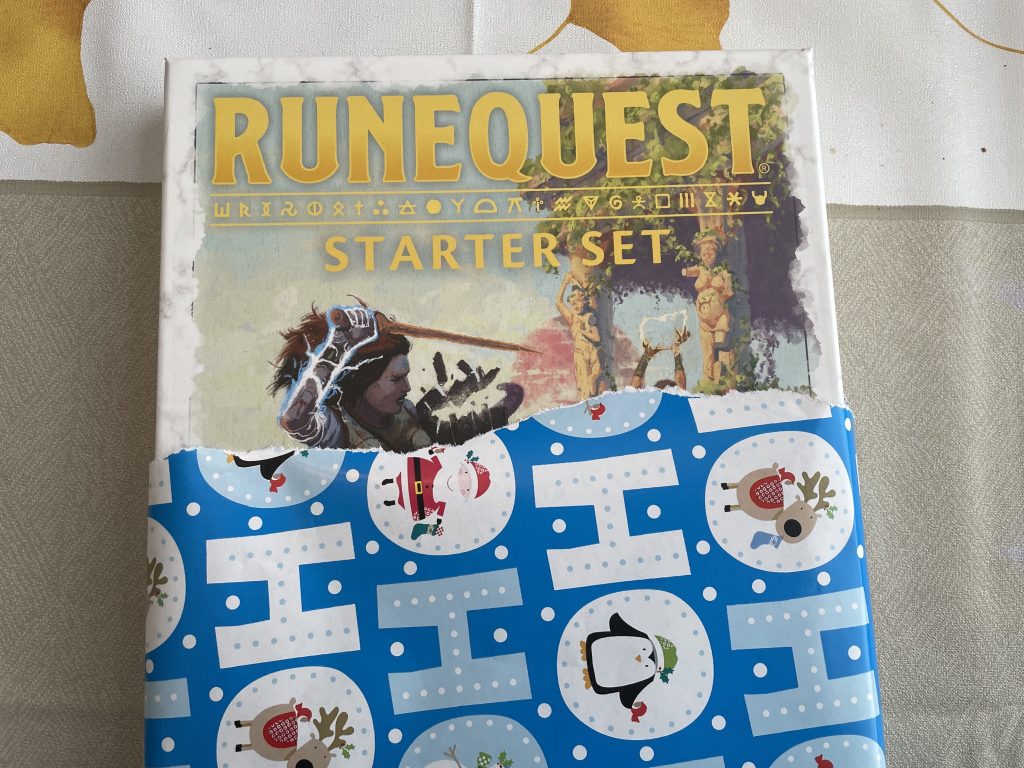
In which I revisit my review:
Since I wrote my RuneQuest Starter Set review, I’ve had some time to mull it over a bit longer and, more importantly, I listened to Baz’ excellent RuneQuest Year Zero podcast which provided many revelatory insights. I figured that the latest episode of his podcast was as good an opportunity as any to revisit my opinions, although it means that this article might turn into a bit of a direct reply to Gaz, rather than a truly standalone post. I’ll try my best to stay close to the latter however.
There are some excellent discussions around starter sets and RuneQuest out there, and hopefully this adds a bit to them.
Chaosium News

Here are this week’s Chaosium news!
RuneQuest Starter Stream Episode 02
The official RuneQuest actual play, now dubbed “RuneQuest Starter Stream”, has released its second episode! The group goes through the second half of “A Rough Landing”, getting their first taste of Chaos. You can definitely tell that James Coquillat, who officiates as GM, is having fun adding some local colour to each scene, letting some roleplay occur here and there, compared to other actual plays of that scenario who try to cram it all in one session. This is nice, since fantasy settings like Glorantha come alive in the details.
Pendragon Design Journal #7
Chaosium has been releasing regular “design journals” for the upcoming 6th edition of Pendragon, and the latest entry reminded me of one of the many little things I don’t like in RuneQuest. It talks (among other things) about a bonus stat called Geniality which adds to a character’s APP (Appeal) and some related abilities. It models how wearing fancy clothes, shiny armour, and impressive weapons can add to your charisma.
In RuneQuest, these things are somewhat hand-waved and give you a +1 to CHA (Charisma). My first reaction when I read this was to wonder what happens if you give or sell these impressive items away, lose status, or time passes and people forget what you did two years ago. I wished it had been handled with a separate ability, with some room for it on the character sheet… so if you’re like me, it might be worth it to steal a little more mechanics from Pendragon!
Jeff’s Notes

Jeff Richard, the current mastermind on everything Gloranthan at Chaosium, is often posting notes and thoughts on the RuneQuest Facebook group. Here’s our curated list from the past week. A partial archive of these sources is compiled on the Well of Daliath.
Gloranthan Alcohol
Jeff might have had some good drinks this week-end since he posted several times about alcohol in Glorantha early in the week. Let’s break it up, and add some annotations for those out there like me who know nothing about agriculture and alcohol… yes you read that right, I’m a French guy who knows nothing about beer or wine. Mostly because I don’t drink it and never have. And yes, that’s why they kicked me out of the country and I had to go to Canada… anyway, enough chit-chat!
Lunar Alcohol
First, a list of Pelorian drinks:
Corn beer. Like chicha, this is made in huge earthenware vats and because of its low alcohol content (1-3%) is consumed in vast quantities. Corn beer is often drunk in Lunar celebrations and ceremonies because of its connection with Hon-eel.
Chicha is a corn beer popular in the Andes and elsewhere in Latin America since the time of the Inca. It, err, looks like sewage water or something:
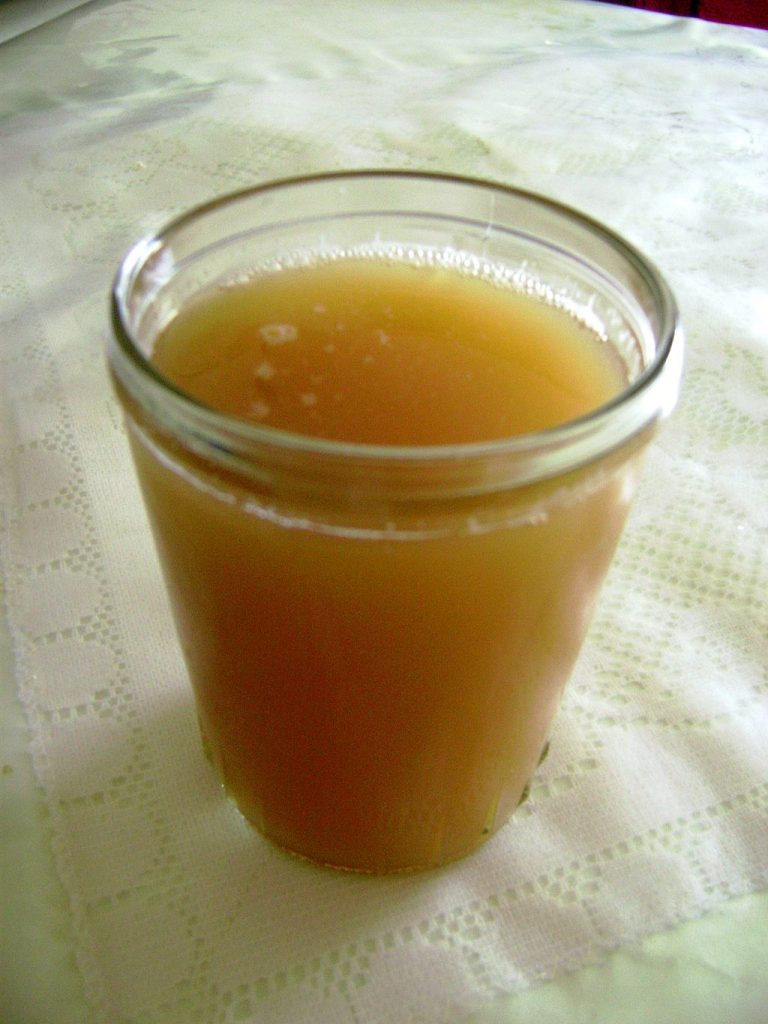
Depending on the process and additives, it can have various colours and tastes though. More here.
Rice wine. Many varieties of rice wine are known in the Lunar Heartlands, with an average alcohol content of 18-25%. Particularly popular in religious festivals for Lodril, the local rice goddess, and Oslira.
Rice wine is traditionally popular in Southeast Asia, which shows you how much of a mash-up the Lunar Empire is. The most famous type of rice wine is probably sake, which is generally clear in appearance, and that you can get in your local Japanese restaurant. But again, there seems to be many different types of rice wine. Some are pale yellow, some are milky white, yet others are dark yellow, all with different amounts of alcohol and sugar in them. It looks like some of them are actually used for cooking, instead of drinking.
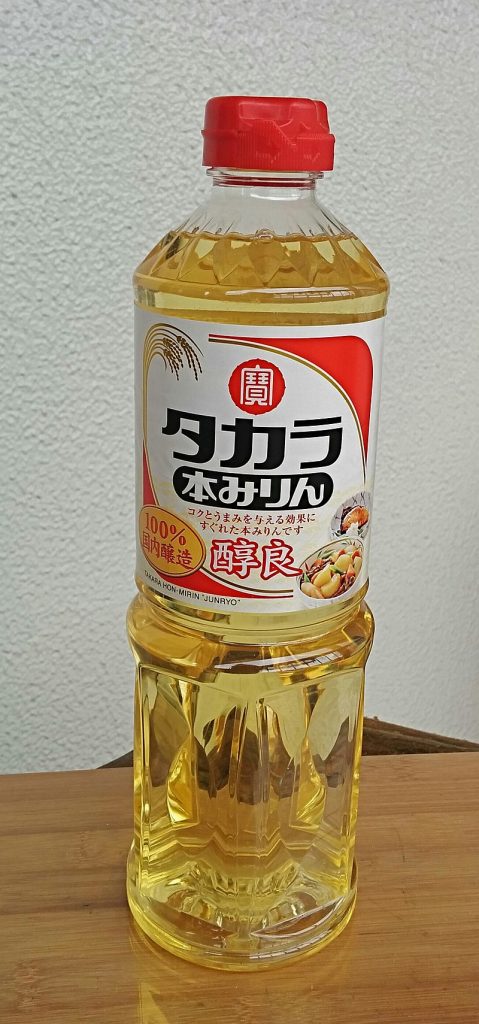
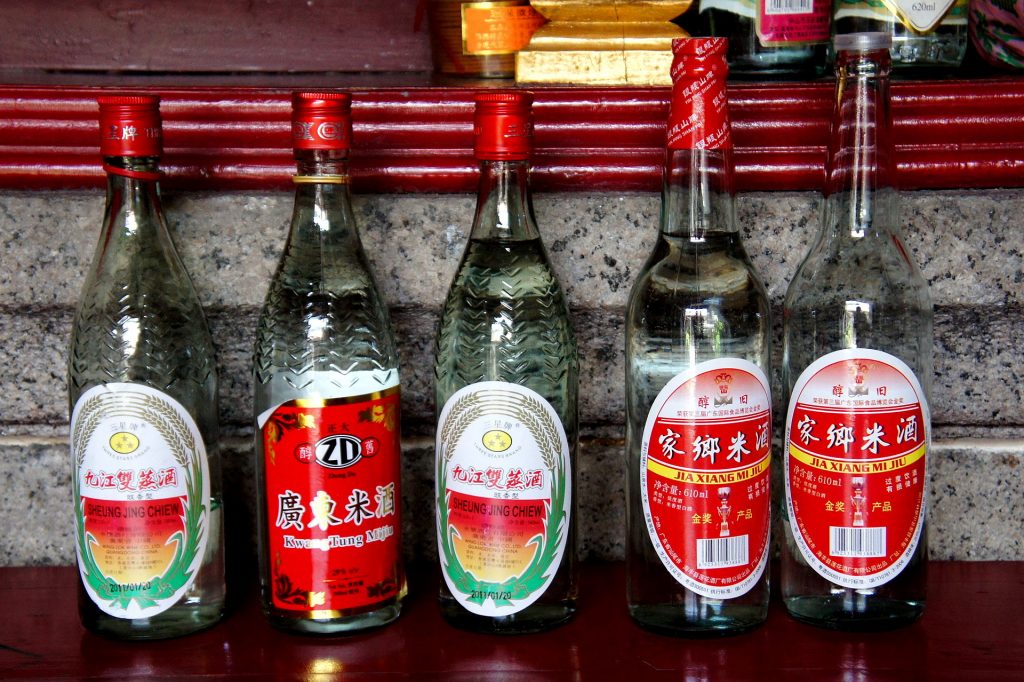

Barley beer and wine. In the Lunar Provinces, Sylila, Karasal, Oronin, and the West Reaches, barley is more important than rice and barley beer and wine are popular. Barleywine is a strong ale, 6-12%. It is considered semi-barbaric by many Heartlanders.
Wheat beer. In the Lunar Provinces, beer made from emmer wheat is popular. It is considered barbaric by many Heartlanders.
Barley is a cereal that I always mix up with wheat. Frankly they look the same in the field to me. Don’t come at me, farmers in the audience… but it looks like many beers also actually mix barley and wheat anyway! So there.
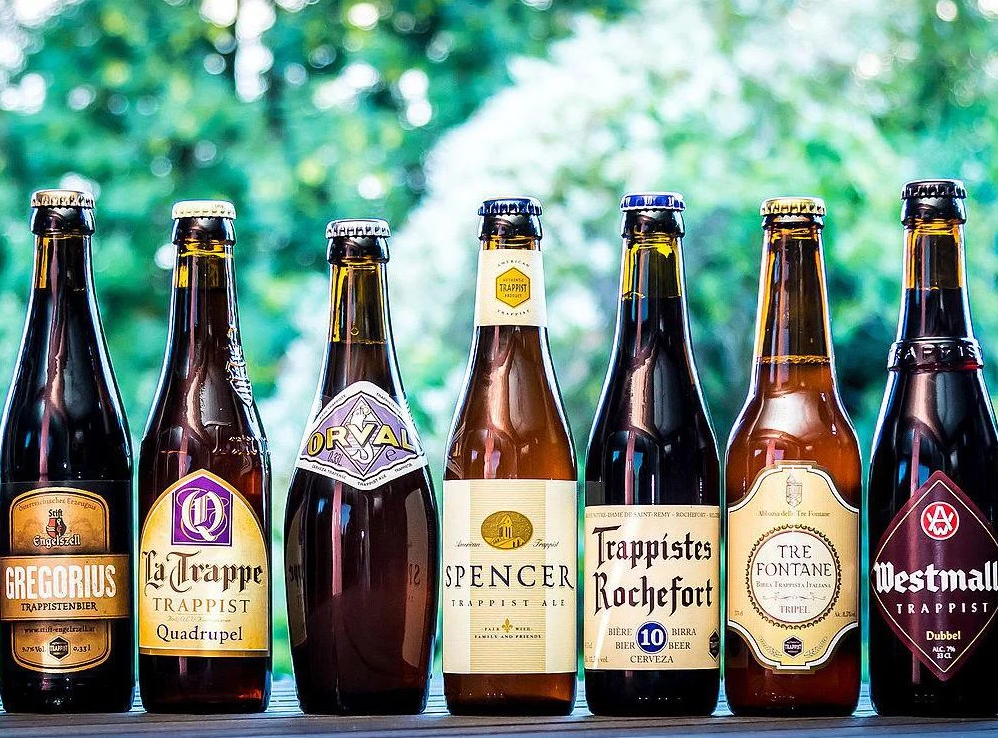
As far as barley is concerned, it looks like two thirds of barley production is for animal fodder, and one third is for beer and distilled beverages. We’ll talk about distillation in a bit so let’s ignore whisky for bit.
Barley and wheat beers, as far as I can tell, encompass all your classic western beers, from Germany to the UK to North America. This includes cooking barley into malt and letting it ferment, sometimes mixed with wheat or yeast or whatever. More or less. Listen, I’m totally useless around alcohol, ok? And I’m not sure about barleywine either, so I’ll leave it there.
Kumis. Nearer to the Redlands, fermented mare’s milk is popular. It is also drunk by many aristocratic clans.
Kumis is an actual real-world drink, which is common in the Central Asian steppes, Turkey, and some other areas nearby.
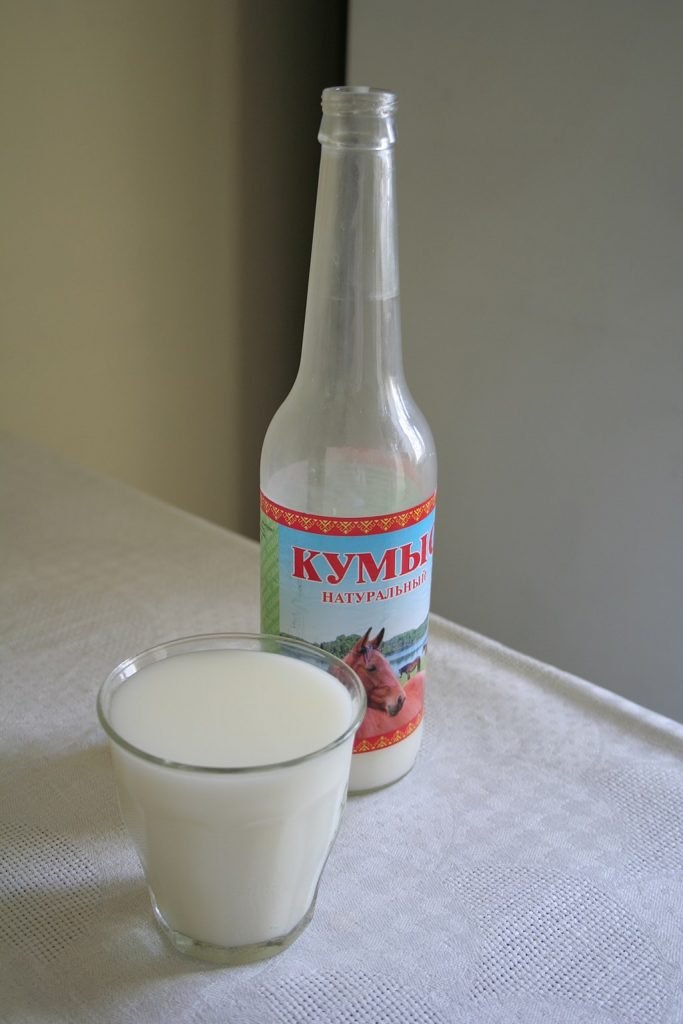
Dragon Pass Alcohol
Next, some common drinks in Dragon Pass. Some types of alcohol are repeated from above so refer to the previous annotation as appropriate:
Beer. Made from emmer wheat, einkorn, or barley, beer (I am using the term broadly) is the most common drink. Brewing is often associated with the Ernalda cult and most brewers are women. Lots of different varieties and styles.
Ok so I already can’t tell the difference between wheat and barley, and now I have to figure out the difference between different types of wheat? Nope! It’s all funny looking plants with nicely arranged hulls! I assume Dragon Pass beer will differ from Pelorian beer just as beer differs between Germany, Belgium, France, and the UK. I fondly remember many drawn-out debates between friends and family members about the pros and cons of this or that beer compared to other beers… that’s usually when I tune out and read a book or draw something.
White wine. White grapes are grown in much of Sartar. It is associated with the Ernalda cult, particularly around Clearwine, and again most wine brewing is done by women. Wine is mainly consumed in religious rituals.
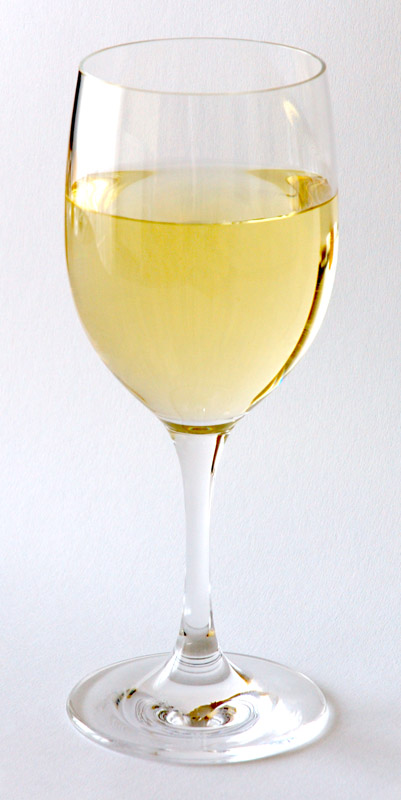
Oh hey that’s easy, right? You take white grapes, stomp on them bare foot, let it ferment, and then drink it? Or something? (checks notes) Oh no, it’s actually super complicated, from skin-contact fermentation, residual sugar ratios, and so on. Let me, err, go read a book instead.
Corn beer. Popular in Lunar Tarsh, this drink is like chicha and made from fermented maize. Associated with the Hon-eel cult.
Kumis. Fermented mare’s milk is popular in the Grazelands. A Praxian variant is popular around Swenstown.
Troll beer. Don’t drink this. Everyone knows troll beers are lethal to humans.
Burned Water (aka Water of Life). The Free Sages of Boldhome have figured out a method of distilling beer and water. It is pricey and largely confined to the wealthy.
There, I knew we would come back to distillation! I thought it was only invented somewhat recently, but it turns out there’s evidence of it in Akkadian tablets. So no need to pay insane Mostali prices for your whisky — I hear they only produced it as a failed attempt at making fuel for some of their machines.
There’s some adventuring opportunity there too, since Lhankor Mhy sages outside of Boldhome have also developped their own distilleries (see below in the Holy Country) and now you have some conflicts between the cognacs, rums, and scotches of various knowledge temples. Have you ever seen drunk philosophers fight? It’s quite pathetic.
Holy Country Alcohol
Finally, some Holy Country drinks, which is were connoisseurs apparently get their stuff:
Beer. Made from einkorn, emmer, or barley, beer is made in vast quantities by the Earth Temples. It is also drunk in vast quantities, and celebrated as the Gift of the Goddess. Many suggest that the Jolly Fat Man is the incarnation of beer and its joys (but the cult also consumes wine in vast quantities).
Red Wine. Wine grapes are grown throughout the Holy Country. The best are thought to come from the Vinavale with its pleasant climate, hills, and volcanic soil. Red wine is a very important trade good and ships loaded with amphora sail out of the Choralinthor to distant lands, and caravans carrying wine travel the roads of Dragon Pass to the Lunar Empire. Wine is drunk in religious rituals and at social gatherings.
White Wine. White grapes are common in Heortland, although many merchants claim the best come from Dragon Pass.
Burned Water/Water of Life. The Lhankor Mhy cult has developed techniques of distilling wine and beer into strong spirits. About time the Alchemists were good for something! Lots of variations, lots of different techniques. A popular trade good but pricey.
Miscellaneous Alcohol Notes
Jeff didn’t mention fruit wines (such as Apple Lane’s cider) because they are “usually a purely seasonal/local thing”. So “apple wine, berry wine, and so on” might be available at any local market given the right season.
Another absentee is mead:
Now mead is well-known to the Orlanthi and it is a ritually important drink. The Orlanthi make mead mixed with various plants and fungi to produce a drink called “Crazy Black Widebrew”. This drink is an entheogen and often consumed in vast amounts during religious rituals and as the preparations for a heroquest.
I hear it is very sweet and flavorful, and dangerous if drunk outside of religious rituals.
In these bastardised times, it is possible to get a bowl of mead, but this is watered down stuff, barely worthy of the name. Real mead – Crazy Black Widebrew – will transport you across realms.
Allocating Your Unconscious Life
Here are some notes for thinking about the spirituality of Gloranthan people:
Runequest distinguishes three basic levels of spiritual participation in a cult – lay member (casual), initiate (dedicated), Rune Master (professional). Another way of thinking about it is how much of our Unconscious Life is devoted to a particular cult or thing. So let’s imagine what percentage of our unconscious life is dedicated to specific pursuits.
– Maintaining contact with a major deity like Orlanth or Ernalda require at least 5% of your unconscious (minimum required for adulthood initiation). But full contact, like being an initiate, requires 20% of your unconscious. So let’s say Vasana has 20% – 5% with Orlanth in general, and 15% with Vinga Adventurous.
– A minor deity takes up 5-15% of your unconscious.
– An allied spirit takes up another 10%. Each bound spirit is another 2%. Dealing with ancestors and those sorts of community rites are at least another 5%. This isn’t the Daka Fal cult- that’s a minor deity – but just what a community does to revere those who went before them.
– Spirit magic. That also takes up unconscious life – let’s say usually somewhere between 10 and 15%.
– Personal Power. Everyone has some inner reserve which is used to protect oneself and one’s ego. Let’s say 10%. Let’s say Vasana has 15% in that.
– Dream. In a sense all of the other categories determine the shapes one’s dreams take, but this is the stuff that outside our control. Minimum of 10% to keep your sanity. Lets say Vasana puts 25% in Dreams.
– Undifferentiated. This is what you don’t know and can’t know. At least 10%. A few mystic traditions try to get this to 100% so that they Know. Let’s say Vasana has 25% in that as well.
So with Vasana, we already have about 50% of her unconscious life allocated to specific spiritual pursuits, with the rest being daydreaming or undifferentiated. She’s pretty concentrated and focused on spiritual things, but almost half her unconscious is either undifferentiated or dreaming.
Now let’s say she becomes a Rune Lord. That knocks things up another 10% likely coming out of her undifferentiated self – that allied spirit is a part of her unconscious! She then becomes a heroquester, knocking things up another 10%, as she tries to organize cult activities around her explorations – that comes out of her undifferentiated self and her dreams.
Add in a few more spirits and pretty soon her unconscious is fully devoted to spiritual pursuits. There’s really nothing more that she can do!
Now the point of that thought experiment is to show that our adventurers are already pretty spiritually developed characters.
We could imagine Alvin the Ordinary. He’s doing the minimum necessary to function spiritually within his society:
– 5% to Orlanth
– 5% to the ancestors
– 10% to personal power
– 5% for spirit magic
– 25% for dreaming
– 50% is Undifferentiated. Alvin is more like us moderns than we are like Vasana!So you can see a big difference here. We call Alvin a Lay Member and Vasana an Initiate, but really it is how much of their unconscious self they are dedicating to spiritual pursuits.
Now some cultures (like us moderns) dedicate a lot of our unconscious to various abstractions like Monotheism, Sorcery, Democracy, etc. But the Orlanthi and the Pelorians don’t really do that.
Except for philosophers. But they are weird.
I have no idea what to do with this… I’m not even sure what it means. Is this allocation done on a time basis? That is, is Alvin the Ordinary dreaming 25% of the time? Or is this in terms of brain-power over the course of a day? Or brain-power at any given time?
Jeff continues, this time with Argrath, Harrek, and Jar-eel, all major “superhero” figures of the Hero Wars:
Now it is important to note that this is not something that underpins any game mechanics at this point. But it gives us some interesting hard limits on spiritual participation. […]
Argrath actually dedicates most of his unconscious self to things other than himself:
Dream 15% – Argrath is more of a dreamer that most people.
Undifferentiated 10% – this is that bit that Argrath doesn’t and can’t know. He’s a mortal after all.
Orlanth 25%, divided between Orlanth, Adventurous, and Rex.
Dragon stuff 10% (Dragontooth Runners, etc.)
White Bull 10%
Personal Power 20%
Other Spirits 10%
It’s interesting that Argrath being “more of a dreamer” than most people gives him a lower percentage of dreaming in his unconscious life. Is it because he’s consciously dreaming? Lucid dreaming means it takes up less room in your unconscious, making room for other stuff? Mmmh.
So in terms of personal aggrandisement, Argrath is about on the same level as Vasana or other Orlanthi hero-types. More than half of the mana he receives goes to Orlanth, Draconic stuff, the White Bull, or other spirits. About a third goes to personal power and dreaming. Now admittedly his is a MUCH BIGGER pie than someone like Vasana, but he divides it up in a more or less normal way.
Harrek is different.
White Bear 30%
Dream 10%
Undifferentiated 10%
Personal Power 50%With Harrek almost everything goes to his personal power and to his White Bear self. And given how HUGE the mana pool he gets to play around with must be, that Personal Power lets him do stuff like kill with a glance.
Jar-eel is similar to Harrek, not Argrath.
Personal Power 50%
Bloodspillers 20%
Dream 10%
Undifferentiated 10%
Red Goddess 10%So with Jar-eel about half goes to her personal aggrandisement, and another 20% goes to her Sardukar [sic] Guard.
The Bloodspillers is an elite regiment of the Imperial Bodyguard, who embrace Jar-eel’s cult of the Moonsword. A guy named Beat-Pot Aelwrin (who I’ve heard of but know next to nothing about) is the high priest of this Moonsword cult. Sardaukar is just a Dune reference to the Padishah Emperor’s own elite bodyguard regiment.
This actually shows a nice and tidy way of distinguishing between superheroes and mere heroes. Heroes are lifted by others and those others share in their rewards. Superheroes have gotten to the point that they don’t need those others any more and have broken out of that system.
Sneak Peek At Heroquesting Character Sheets
Here’s what Jeff is working on with regards to heroquesting rules:
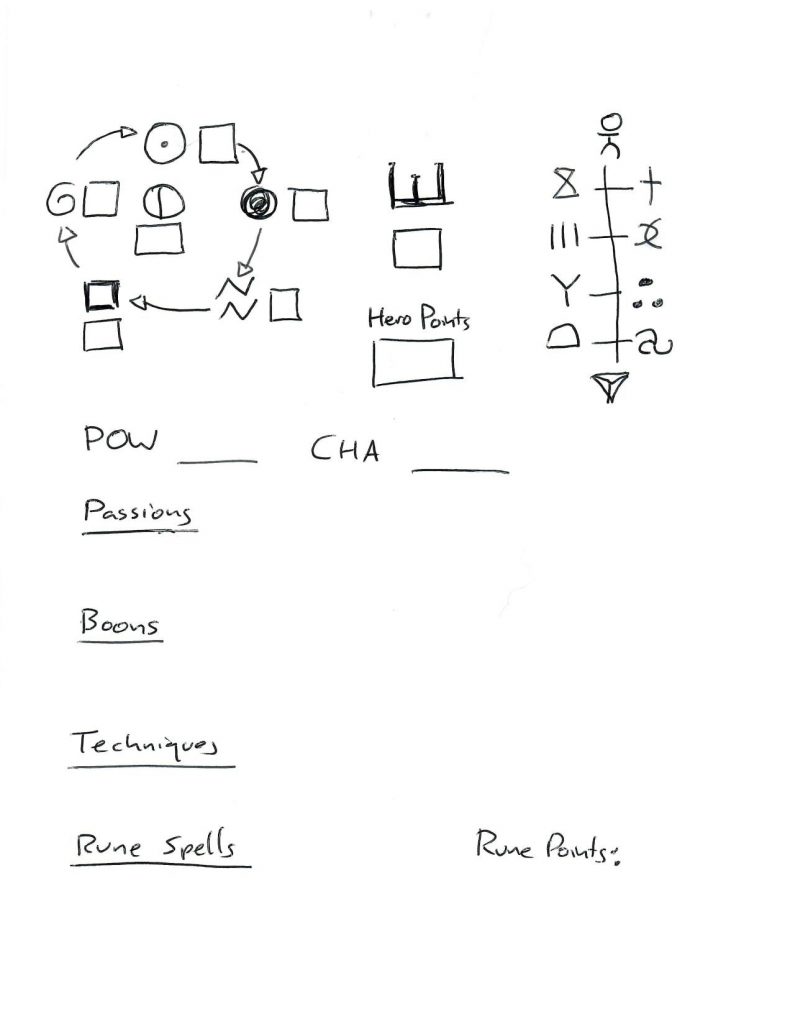
There were no comments given, so we can only guess. We already know that Hero Points represent the power of the Hero Soul. They act like Rune Points in many ways, except that you don’t replenish them by worshipping deities: you replenish them by having other people worship you.
If I remember correctly, the Mastery Rune (above the Hero Points box) is supposed to represent your ability to control the mythical landscape during a heroquest. The Techniques entry (second to last) should contain the various heroquesting techniques you have mastered, such as “ranging” from one myth to another, “identifying” with a deity, and so on. I suppose that these techniques won’t get any ability score per se, and will instead be just like Illumination powers — you either have them or not. However, they might incur an ability roll. Last I heard, for instance, “identification” is done by rolling under two of the target deity’s Runes. Succeeding in both gives you bonuses to do things the deity is supposed to be good at, while failures means you might get misidentified.
Doing “cool stuff” in the heroquest is probably done through the Runes, where “cool stuff” means “magical mythical stuff”. That’s how it is in my own heroquesting house rules, with normal successes giving a rough equivalent of a 1 point Rune Spell’s worth of effects, a special success giving the equivalent of a 2 point Rune Spell, and a critical success that of a 3 point Rune Spell. Spending Rune Points lets you “bump” those effects up in my house rules, and doing something that matches a Rune Spell you already have is also easier than trying to do something else, so it’s interesting to see Rune Spells and Rune Points on that character sheet. I wonder if Chaosium is going for something similar, and I’m certainly looking forward to the official rules.
POW and CHA have always been advertised as important characteristics for heroquesting. I’m going to assume that one of them (maybe both) will be your “attrition” characteristic, a bit like Hit Points. In my own heroquesting house rules, and in Jon Webb’s rules in his Sandheart campaign, POW takes that role.
Passions are probably there because they’re always useful for augments… but I can’t help and think about how Passions are going to be used as “fuel” for fighting in battle, when the mass battle rules eventually get published. I wonder if this is the same thing here, and maybe that’s where community support comes in: maybe your clan and tribe can provide their own Loyalty and Devotion Passions for you to use during the heroquest?
Finally, Boons are the special powers you get from successfully heroquesting. Sometimes you simply get bonuses in characteristics or other abilities, or you get a Rune Spell, but the main point of a heroquest is that you can also get something that’s completely unique and potentially rules-breaking. This is where gamemasters and players can go wild! It’s interesting however that there’s no “Banes” or other sort of bad stuff on there.
Well, that’s enough theorizing for today.
The Powerful Issaries Temple
Jeff wrote a few comments about the influence of Issaries temples in legal matters in Sartar:
[…] Issaries has a STRONG interest in making sure that its members are not cheated (and will send Spirits of Reprisals against members who do cheat or steal).
Jeff adds that the Merchants Guild is “powerful and rich”, and will generally be upset about any embezzlement or other crimes inside the organization. Plus, the god itself will be upset too.
And if the Jonstown Temple refuses to do anything about it, this could even be the sort of thing that gets the Merchant Princes involved as it threatens the ability to put together caravans. And anything that gets the Merchant Princes attention could get Boldhome and the Prince involved (especially if Argrath, who is more sensitive to the financial requirements of warfare than Kallyr, is Prince).
Here is some information about the Association of Merchant Princes:
These are the merchant priests of the Goldentongue cult whose caravans travel the roads of Sartar carrying goods and other valuables. Their primary concern is with themselves and their livelihood. The Merchant Princes sometimes combine together to form big caravans that may consist of hundreds of armed people – however, they are official neutral in the conflicts between the Empire and Sartar. They seek peace and protection for their caravans, and cooperate with each other to protect themselves and their profits. They have much wealth and can provide many things which adventurers desire.
Community Roundup
The community roundup is our highlight of interesting things being mentioned in the Glorantha-related Facebook groups, sub-Reddits, and other similar online places.
Exploring Glorantha’s Trolls
JM and Evan are back with another Exploring Glorantha episde which focuses on the trolls. As always, they chat about everything they like or find interesting about the topic, and you can get their notes if you are a backer of Iconic Productions (which does many other things besides these video series). Plus, I get a little mention at the beginning!
New Ducks Courtesy of Skulldixon
Friend of the show Skulldixon (whom we interviewed) is working on some more duck illustrations! I really love the design of these ducks. Here’s a snail herder:

You can also see a work-in-progress duck shaman here.
Rubble Runners Miniatures
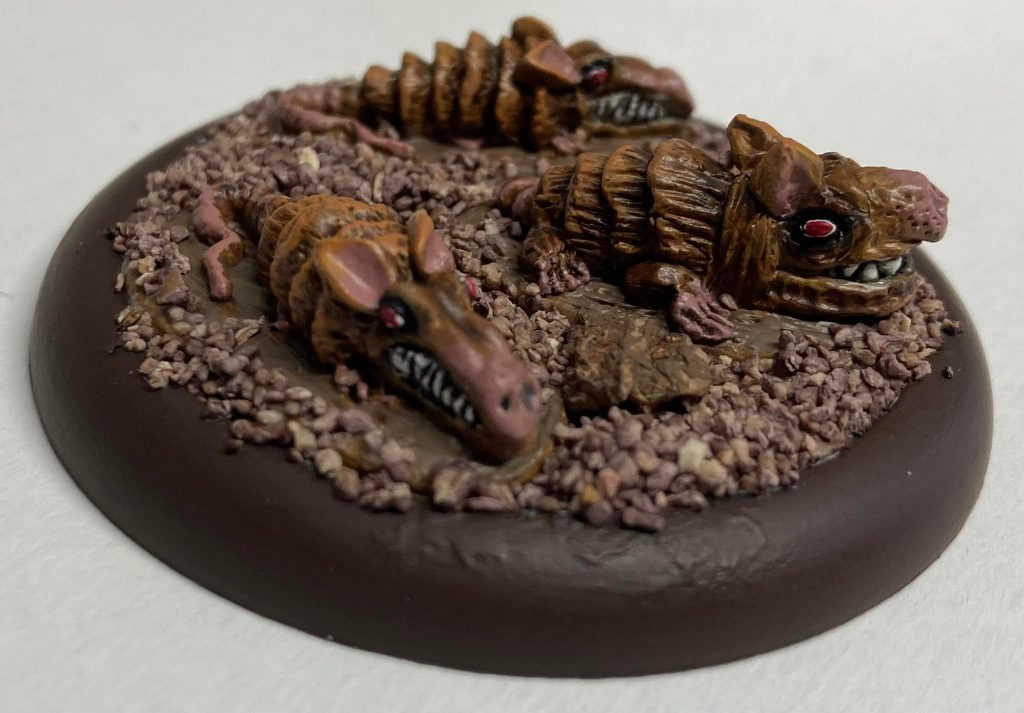
Here are some painted Rubble Runners, from Infinity Engine, courtesy of Jim Mozley!
Sable Rider and Humakti Miniatures
Felix Figure Painting has already painted more than 170 miniatures so far in 2022 apparently. I have painted, like, two in my entire life. Oh well. Let’s look at some pretty pictures!
First, Sable Riders from Mad Knight Castings:
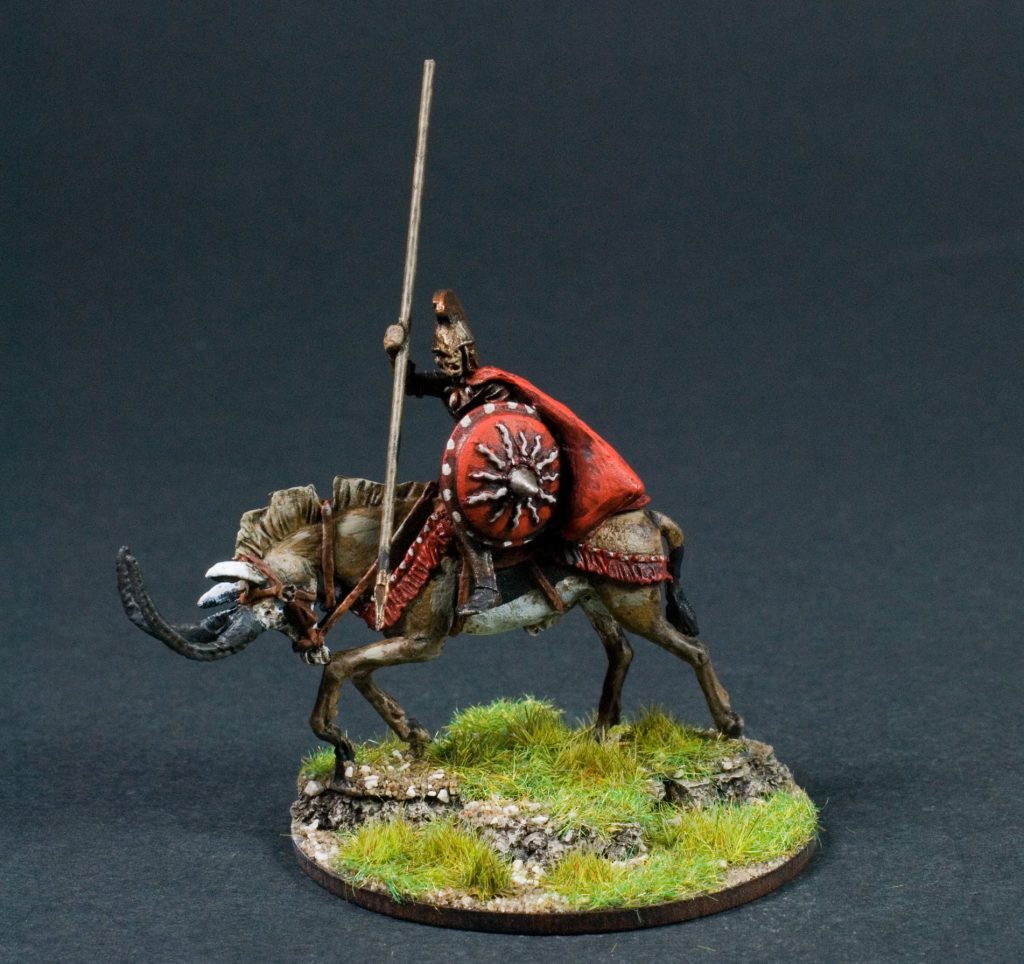
And next, some Humakti warriors:
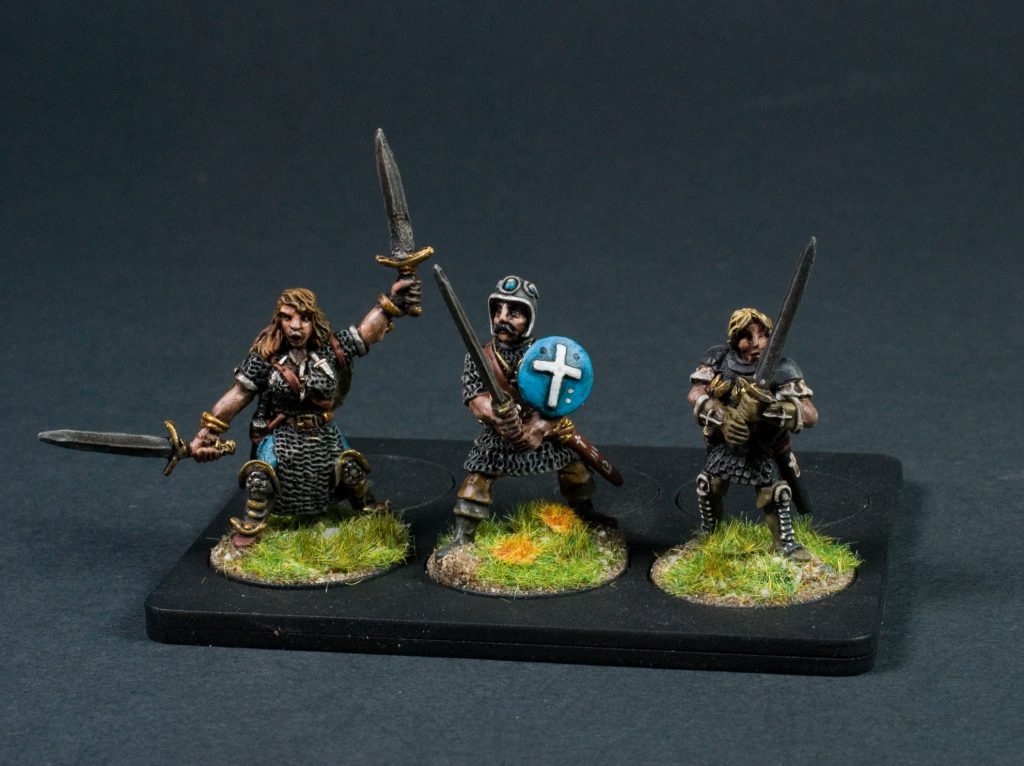
Morokanth Kitbash
Is everybody working on their miniatures this week to forget about the horrible state of world news? Maybe! Let’s forget our troubles by looking at more pretty pictures! These ones come from Phil Leedell, whose kit bashing was previously featured in the Journal of Runic Studies.
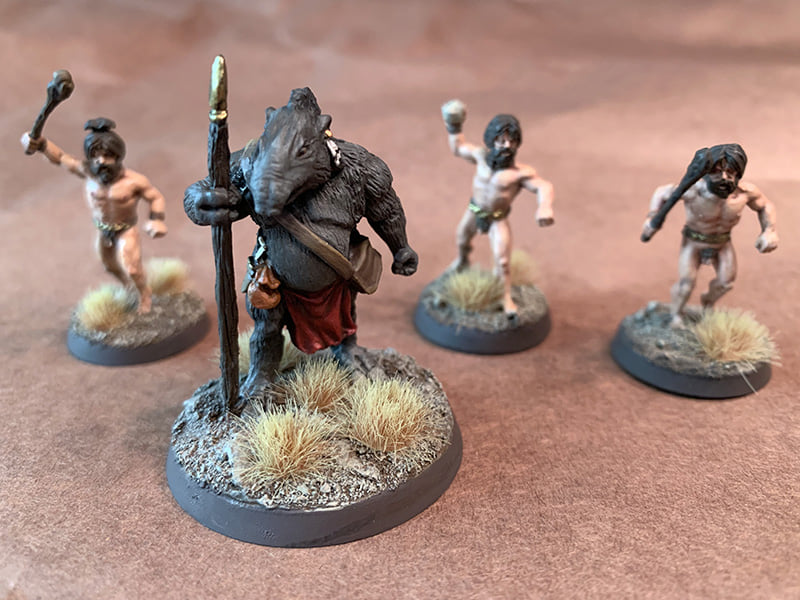
Morokanth from Rapier Miniatures are so very big and altogether a bit too bipedal… but lovely sculpts. Herdmen with sticks and stones are Victrix kitbashes.
RuneQuest Year Zero Wrap-Up
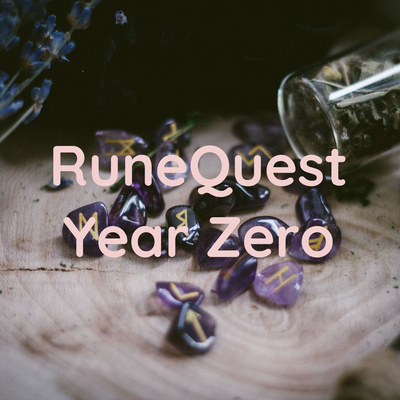
The excellent RuneQuest Year Zero podcast is reaching its end, or at least the end of its first arc, as Baz wraps-up his read-through of the RuneQuest Starter Set and gives his final thoughts. There is a lot to unpack there, so I did that in a separate blog post.
Improved RuneQuest Rulebook Index
Phil Hibbs has made a better index for the RuneQuest rulebook, which makes page numbers bold when they point to the “main” definitions of the corresponding item. It also fixes a few errors with wrong or missing page numbers.
For instance, compare the rulebook’s Yelm entry with Phil’s improved one:

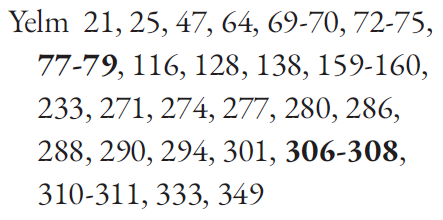
Elsewhere on Arachne Solara’s Web
Not everything is about Glorantha, although most things are! Here are loosely relevant things that we found on the interwebs.
Greek & Roman Mythology in Movies
I often enjoy these “so and so expert reviews so and so in movies” videos that various YouTube channels have, and this one is pretty good in my opinion, especially since the choice of movies includes a few surprises as far as I’m concerned. A lot of what the expert, Peter Meineck, says about mythology is quite interesting even for fun-times dragon-land fantasy gaming.
Wave Rocks
Katter Kich, also known as “Wave Rock“, is when the Water Tribe tried to invade the Earth Tribe during the Gods War but their tsunami attempt was frozen in place by Maran Gor, or, errr, something. I don’t know. But I’m sure someone will figure out a cool mythical explanation:
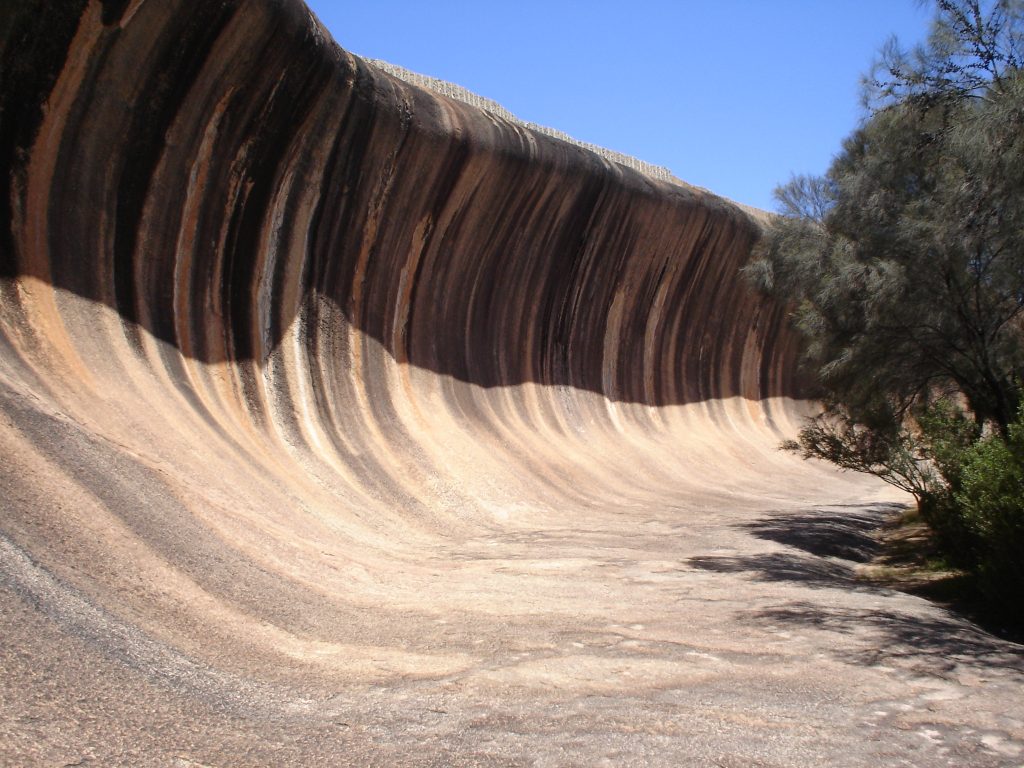
The “wave” is about 15 meters high and around 110 meters long. It’s located in south-western Australia.
If you look for wave rocks, you might also find “The Wave“, a sandstone rock formation in the United States.
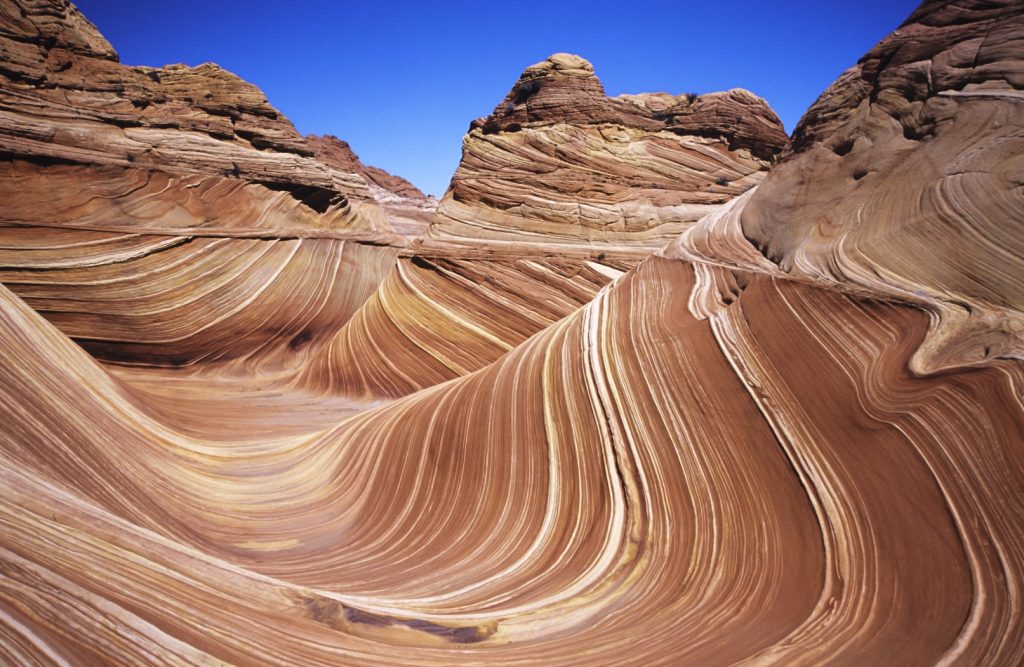
This might be another iconic dungeons like Rainbow Mounds, with the ridges being where a multi-clawed Chaos monster scarred a now fallen god. Like I said, someone might have some cool mythical explanations for these things… if you do, send it to us!
When You Meet A Shaman Broo
No comment (see it here if the embed doesn’t work).
Thank you for reading
That’s it for this week! Please contact us with any feedback, question, or news item we’ve missed!



2 comments on “Journal of Runic Studies #37”